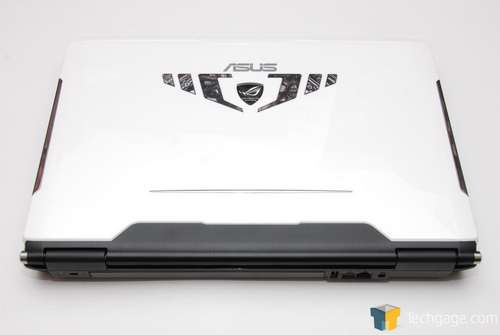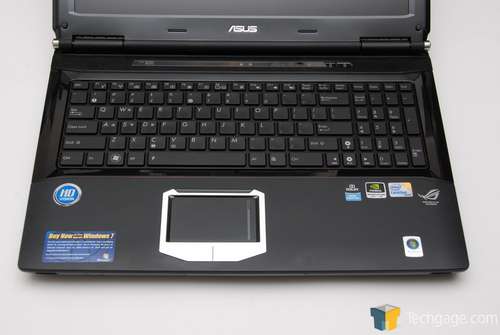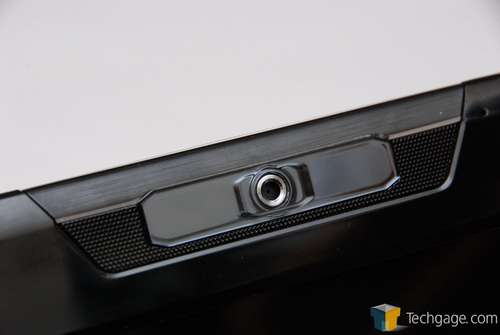- Qualcomm Launches Snapdragon 4 Gen 2 Mobile Platform
- AMD Launches Ryzen PRO 7000 Series Mobile & Desktop Platform
- Intel Launches Sleek Single-Slot Arc Pro A60 Workstation Graphics Card
- NVIDIA Announces Latest Ada Lovelace Additions: GeForce RTX 4060 Ti & RTX 4060
- Maxon Redshift With AMD Radeon GPU Rendering Support Now Available
ASUS G51Vx 15″ Gaming Notebook

To purchase a quality gaming notebook just a few years ago would have set you back at least $2,000. The situation is far better today, and it’s proven with ASUS’ G51Vx, coming in at $999. It comes complete with NVIDIA’s GeForce GTX 260M graphics card, a great feature-set and plays most of today’s games at max detail settings with ease.
Page 1 – Introduction
It’s been quite a while since I’ve had the chance to take a look at a “gaming notebook”, so when ASUS offered me the chance to take a look at their G51Vx, an offering that comes in at $999, I couldn’t pass it up. In the past, notebooks designed for gaming were expensive… far more so than regular notebooks, so the price tag of this one alone intrigued me quite a bit. How does the G51Vx earn its “gaming” moniker? Well, the NVIDIA GeForce GTX 260M 1GB sure helps.
Before we continue onto a look at the notebook, I should mention that like most other models out there, this one has more than one version, and to say that they differ would be an understatement. While the model I received includes a modest dual-core processor, another variant has a quad-core Q9000. Then there’s the ODD. To keep costs low on this particular version, we have a standard DVD-RW, while the quad-core model of the notebook includes a Blu-ray player.
As you could expect, this notebook is targetted towards one specific set of people… gamers. As such, it offers certain features that cater directly to that crowd, such as backlit keys, a full numpad, Altec Lansing speakers with subwoofer, a large 7200 RPM hard drive and of course, the graphics card that’s capable of handling any current game on the market at the notebook’s native screen resolution of 1366×768.
“What, only 1366×768?” you ask? I agree… it would have been nice to see an increased resolution, say, 1680×1050, but it all comes down to cost. To keep the notebook at or below $1,000 and still deliver stellar gaming performance, the display itself had to be kept modest. The quad-core version of the notebook boosts the display to 1920×1080, which is far improved. That version of the notebook costs 60% more, however.
Closer Look at ASUS’ G51Vx
Instead of rambling, how about we take a tour around the G51Vx, huh? First, here’s a shot of the notebook all closed up. The lone color scheme this model comes in is pearl white for the top, and black for the rest. If you have any remaining doubts that this is a gaming notebook, the “Republic of Gamers” logo should help rid them. The design surrounding the logo is part of the top itself, and not just a sticker.
After cracking open the top, we can see all the goodness that awaits us. We have the obligitory product logos, a large touchpad that’s aligned with the main keyboard and some buttons under the display. Note the “HD Vision” sticker here. I believe the quad-core variant of the notebook says “True HD Vision”, which denotes the 1920×1080 resolution.
Ahh, this is where my love for this notebook kicked off. I admit that I’m not much of a notebook user, and I primarily only use them when I’m out of town on business. And even then, I rarely stick to a single notebook since so many pass through here, which means I have to re-learn each one. It also means that I gain good experience with a wide-variety of notebooks out there, and I can honestly say, this is one of the absolutely best touchpads I’ve ever used. It’s clear ASUS put extra thought into the touchpad here, just in case gamers actually wanted to use it for the odd bout of gaming.
The best way I can describe the surface is as matte, but it’s not at all rough on your fingertips. Rather, fingers easily glide along the surface, without any sort of numbness over time that can occur on certain other touchpads (like the one on my HP dv2). Another bonus is the easy-to-use left and right “mouse” buttons. They’re neither too difficult or too easy to push. There’s also a touch scroll-wheel here, but I’ve always found those to be cumbersome, on any notebook.
The G51Vx features a chiclet-style keyboard which I was initially a little wary about. After using the notebook for some time, though, I found it to be fairly ideal, both for gaming and typing. It was the first notebook keyboard in a while where I could actually type fast and not typo. There were certain occasions when I’d purposely slow myself down because I felt like I was going to typo if I kept it up, because I’m so used to that occurring on other models.
The G51Vx might be what some would consider to be a “value” gamer’s notebook, but ASUS spared nothing with the build quality. As a whole, I found the notebook to be very well-built, and not at all flimsy or cheap.
As I mentioned earlier, there are a few different buttons up top, three of which are touch-sensitive. The first touch button, which has the icon of the RoG logo, controls the color schemes that come with ASUS’ own Splendid utility. The second controls the power mode, while the third disables the touchpad (really important when gaming with a mouse). The two “real” buttons both act as power buttons, but when the notebook is turned off, the first button will boot up with Splashtop mode, while the second will boot straight to Windows. To learn a little bit more about Splashtop, you can read an older article of ours here, or check out the official website.
Where connectivity is concerned, the G51Vx delivers. On the right-side of the notebook we have the ODD, two USB ports and our audio jacks.
On the left, we can find a VGA port close to the display, another USB, a FireWire, eSATA, HDMI and the card reader.
At the back is yet another USB port, a LAN port (the modem port is blocked as it doesn’t exist on this model) and also the power adapter port. There’s also a Kensington security lock, which is found at the opposite corner.
Finally, the notebook also features a 2.0 megapixel webcam, which is pretty-much a standard on mid-range notebooks nowadays.
That wraps up our physical tour of the notebook, so let’s continue onto a look at the specifications in more detail, and also the software bundle.
Support our efforts! With ad revenue at an all-time low for written websites, we're relying more than ever on reader support to help us continue putting so much effort into this type of content. You can support us by becoming a Patron, or by using our Amazon shopping affiliate links listed through our articles. Thanks for your support!















